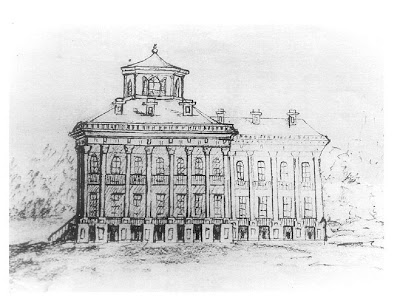You know you're a Southerner when you understand the following:
He's so clumsy he'd trip over a cordless phone.
He's about as handy as a back pocket on a shirt.
That's about as useful as a trap door on a canoe.
He couldn't carry a tune if he had a bucket with a lid on it.
She was so tall she could hunt geese with a rake.
She was so tall if she fell down she would be halfway home.
He was so fat it was easier to go over top of him than around him.
He's Higher than a Georgia pine
I'm fixin' to go down the road a piece
Dumb as a bucket of rocks.
I'll knock you so hard you'll see tomorrow today.
Somebody beat him with the ugly stick
Good night a livin'
That wall is all catawampus.
She's got more nerve than Carter's got Liver Pills.
Your behine is grass and I'm the lawnmower!
If you don't stop that crying, I'll give you something to cry about!
If a bullfrog had wings, he wouldn't bump his behine when he jumped.
I had to go around my elbow to get to my thumb.
Why are you just sitting there like a bump on a pickle.
That woman had forty 'leven kids!
Now ain't that just the berries!
She's just barking up the wrong tree.
Don't bite off more than you can chew.
Don't count your chickens until they hatch.
Don't let your mouth overload your tail.
You either fish or cut bait.
Even a blind hog finds an acorn now and then
.
We got the short end of the stick on that deal.
Hey don't just go hog wild.
They go to bed with the chickens.
Little Miss Priss is shore above her raisin'.
Why have you got your feathers ruffled.
He's as happy as a dead pig in the sunshine.
I don't have no axe to grind.
Why do you holler like a stuck pig.
Well I do declare.
He's sittin in high cotton.
I haven't seen him or her in a coon's age.
The act like two peas in a pod.
I believe that you two need to mend fences.
Now that's scarcer than hen's teeth.
Now she's a sight for sore eyes.
Were back in our own stomping grounds.
The sun don't shine on the same dog's tail all the time.
Now that takes the cake.
That ones too big for his britches.
I can do that in two shakes of a sheep's tail.
Well, jest shut my mouth.
That boy was running around like a chicken with his head cut off!
That baby's cuter than a speckled pup in a red wagon.
It's hotter out here than two goats in a pepper patch.
That woman would argue with a fence post.
That fellow gives me the heebie jeebies.
I really ruffled her feathers.
I do declare!
I really think this time I've bitten off more than I can chew!
You're barkin' up the wrong tree now boy.
Boy, you can't see the forest for the trees.
She looks like she ran thru the forest and hit every tree.
It was like water off a duck's back.
Source: Internet





















